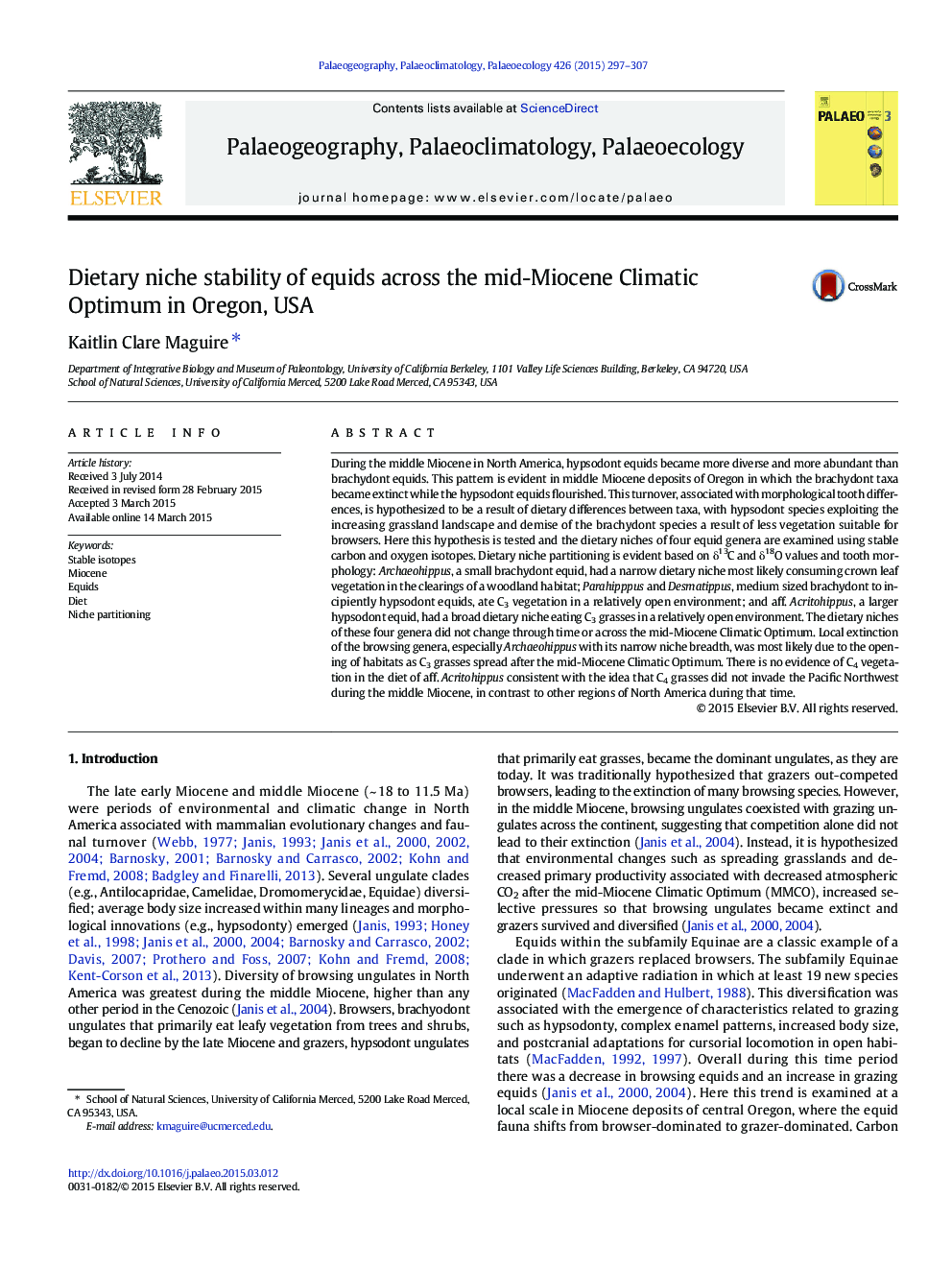| کد مقاله | کد نشریه | سال انتشار | مقاله انگلیسی | نسخه تمام متن |
|---|---|---|---|---|
| 4466000 | 1622164 | 2015 | 11 صفحه PDF | دانلود رایگان |
• The dietary niche of three equid genera from the late Oligocene to middle Miocene are examined.
• The three equid genera demonstrate dietary partitioning between them.
• Diet niches of the three equid genera remain stable across the mid-Miocene Climatic Optimum.
During the middle Miocene in North America, hypsodont equids became more diverse and more abundant than brachydont equids. This pattern is evident in middle Miocene deposits of Oregon in which the brachydont taxa became extinct while the hypsodont equids flourished. This turnover, associated with morphological tooth differences, is hypothesized to be a result of dietary differences between taxa, with hypsodont species exploiting the increasing grassland landscape and demise of the brachydont species a result of less vegetation suitable for browsers. Here this hypothesis is tested and the dietary niches of four equid genera are examined using stable carbon and oxygen isotopes. Dietary niche partitioning is evident based on δ13C and δ18O values and tooth morphology: Archaeohippus, a small brachydont equid, had a narrow dietary niche most likely consuming crown leaf vegetation in the clearings of a woodland habitat; Parahipppus and Desmatippus, medium sized brachydont to incipiently hypsodont equids, ate C3 vegetation in a relatively open environment; and aff. Acritohippus, a larger hypsodont equid, had a broad dietary niche eating C3 grasses in a relatively open environment. The dietary niches of these four genera did not change through time or across the mid-Miocene Climatic Optimum. Local extinction of the browsing genera, especially Archaeohippus with its narrow niche breadth, was most likely due to the opening of habitats as C3 grasses spread after the mid-Miocene Climatic Optimum. There is no evidence of C4 vegetation in the diet of aff. Acritohippus consistent with the idea that C4 grasses did not invade the Pacific Northwest during the middle Miocene, in contrast to other regions of North America during that time.
Journal: Palaeogeography, Palaeoclimatology, Palaeoecology - Volume 426, 15 May 2015, Pages 297–307
